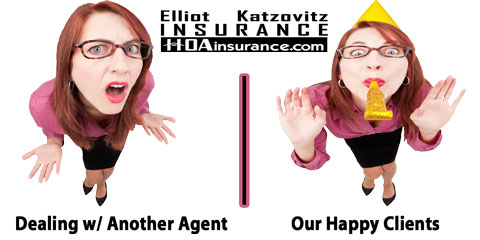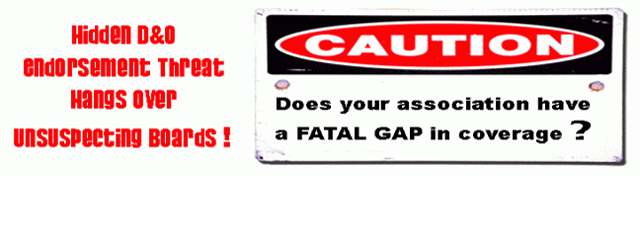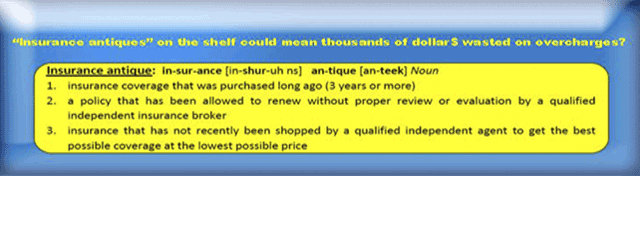
As anyone that specializes in associations can tell you, condominium and homeowners associations have many unique issues. The same is true for the insurance they require. These associations are not like any other commercial entity in many ways. It takes an expert in this type of insurance to properly evaluate what is needed and what is missing from an association’s policy. These are the most common problems that occur in HOA insurance, and why these errors are a potential problem for your association.
1. Wrong Coverage for Unit Interiors Who is responsible for covering the unit interiors is dictated by the association’s CC&Rs. In some instances, the CC&Rs will dictate full coverage for unit interiors on the master policy, and in others it will tell you to exclude them. In even other instances, the CC&Rs will dictate that the association must restore the units to the original condition they were in at the time they were built.
If your master policy is not written to match the CC&Rs requirements, then the association can potentially be over-insured or dangerously under-insured, and it can possibly create situations where coverage is purchased and then denied at the time of loss.
If the association’s CC&Rs dictate that the association’s policy provides coverage for the unit interiors, yet the agent fails to sell a policy that includes the necessary coverage, and if there is a loss that includes the interior of the unit, the association will be required to pay that portion of the loss out of its own pocket. The master policy will decline coverage for the claim because it was excluded on their policy. The unit-owner policy will also decline coverage because owners will look to the CC&Rs, which state that coverage is to be provided by the association, and therefore the owner is not responsible for paying the claim. Why expose yourself to these problems when a proper review of your CC&Rs by an expert in association insurance could help you avoid this problem?
On the other end of the spectrum, if the association’s policy provides for full coverage of the unit interiors when they should be excluded, you can end up with one of two possible problematic outcomes. The first outcome is that the association’s policy will cover the loss when it should be denying it. This will lead to higher premiums and possible cancellation from your current insurer when your policy renews. The alternative is that the association’s adjuster will review the CC&Rs and deny the claim, insisting the association has no insurable interest in the interiors. In this situation, the unit-owner’s policy should pick up coverage. However, some unit-owner contracts state that they will refuse to pay a claim if there is coverage stated under the master policy’s contract. The result could be that you have purchased the coverage twice and neither insurance company will pay the claim.
2. No Building Code and Ordinance Coverage Safety codes are constantly improving all the time in order to better protect the lives of individuals in the event of a disaster. These features are not part of a building, but after a major loss, the association will be responsible for putting them in. In addition, this coverage also pays for the demolition of undamaged portions of the building that need to be altered in order to comply with code when the building is being rebuilt.
An example of this is the installation of fire sprinklers as part of reconstruction. If they were not there originally, this coverage would pay to put them in after a covered loss. The demolition portion would pay for the demolition of the undamaged portion of the building so that sprinklers can be installed in the whole building. The property portion of this coverage would provide for the actual cost of the sprinklers.
3. No Boiler and Machinery Coverage This covers far more than a hot-water boiler if your building has one. It also provides coverage for mechanical breakdown of items such as your elevator, sump pumps and pool equipment, as well as off-premises electrical problems.
A common loss that is covered and can happen to any association is to have the transformer on the pole outside your building blow. This will cause an arcing due to unstable electrical regulation of the electrical system, which can destroy a whole building’s electrical system. Due to the fact that the cause of the loss was off premises, the only way to get coverage is from boiler and machinery coverage.
4. Inaccurate Building Values If the building is not covered for an amount that will adequately replace the building in the event of a total loss, there can be major problems, even if the building is not completely destroyed. By not insuring for the amount the building is valued at, you can trigger a policy’s co-insurance clause. Co-insurance states that if the insured has not properly valued the replacement cost of the building, the insurance company can reduce a claim settlement to reflect the proportional amount that you insured, and then reduce it further by whatever the penalty is in the contract. An example of how this works is if the actual replacement cost of the building is $1,000 and you only insure it for $800, you have now only insured to 80 percent of the building’s value. You now have a $300 loss. They will say that you under-insured by 20 percent, so if there is a 150 percent co-insurance penalty, you will be penalized 30 percent on your claim settlement. They will pay you only $210. Now subtract your deductible and that will be the check that you receive.
On the other side, if the building is overvalued, you may be paying money for coverage that is not necessary, which will end up wasting the association’s money.
How is a lay board supposed to come up with a proper valuation for the cost of rebuilding? Our solution to this problem is to provide the board with a Marshall and Swift replacement cost worksheet so that you can feel comfortable with value used to protect your assets.
5. No D&O Coverage for the Association Manager It is common to see that the manager has been left off the D&O coverage. On most policies, this is not fixed by a typical additional insured endorsement as it is with general liability coverage. They normally charge extra premium and ask additional questions about the manager to allow for the coverage. This is important coverage because an error of communication can create a situation where this type of suit can happen.
An example of this is when the board has put rules in place where late pays will not be tolerated. If you have been late two months in a row, they will begin legal proceedings against the owner. If, for example, the first month the owner pays late by a few days and the next month he is accidentally left on the list of delinquent owners, the board will file suit against the owner. The owner will counter-sue for defamation of character. Without the association manager being named to the D&O coverage, there will be no insurance coverage for the claim.
6. Employee Dishonesty Coverage Excludes Association Manager Depending on the insurance contract, the manager may be excluded from the association’s fidelity coverage. If you have one of these inferior contracts, you will find that the association is exposed and liable if an employee of the management company embezzles funds from your accounts.
7. Inappropriate Liability Limits California law requires that you have $2 million of liability coverage if the association is less than 100 units, and $3 million in coverage if it is 100 units or more. If you have less than that amount of coverage, each individual unit owner becomes susceptible to personal liability for lawsuits by the association.
These are just seven of the errors that are commonly made on association policies. There are others as well.
These errors tend to occur for two reasons:
1) The agent isn’t an expert in association insurance. If the agent is not dealing with association insurance on a daily basis, he will not be aware of many of these issues. These are fine nuances that are not common to other types of insurance. The person that handles your auto and business insurance is not the person that you want handling your association insurance. Make sure you have an expert.
2) An agent is in a competitive bid situation and believes the only item that the board is concerned about is price. You will find that he will get you the cheapest price by removing one or more of these items to gut the coverage he is selling you. Is that the price-reducing strategy you really want? It’s no different than buying a stripped down version of a car versus the fully loaded version. The difference, though, is that the items that get left off the punch list can cost you dearly when you really need it.
These possible problems are why you need an expert in association insurance to review your policy and bid your insurance. You need one agent you trust, not three that you don’t. By using an agency, you will be able to obtain multiple bids using the same standard of coverage. It will also allow you to have an expert in this type of insurance make sure that these and other potentially costly oversights do not exist in your policy.




